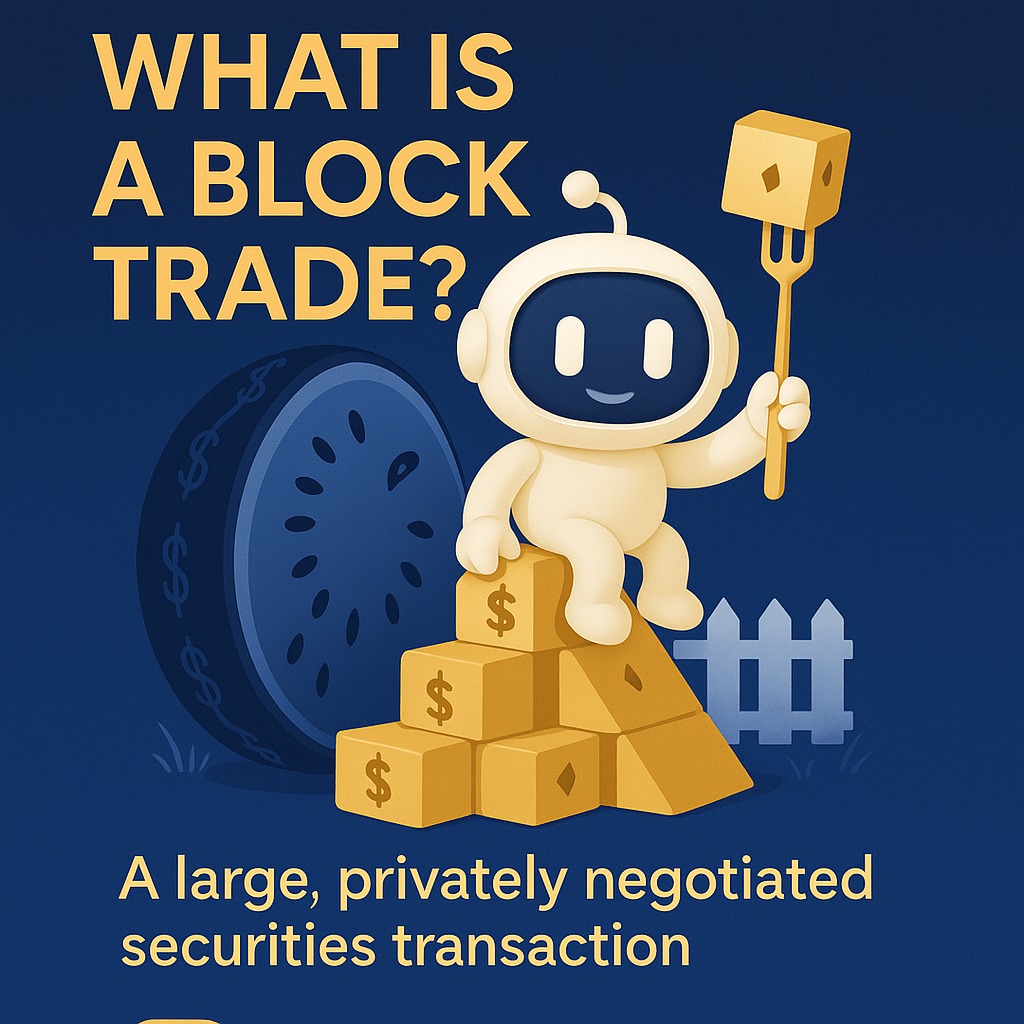Understanding Option Block Trades: Your Window into Smart Money Moves
Learn how institutional option block trades reveal smart money moves and how retail investors can use this information to make better trading decisions.

What Are Option Block Trades?
Option block trades are large, privately negotiated options transactions that typically involve at least 10,000 contracts. These trades are arranged away from public markets to minimize their impact on option prices. Think of them as the "behind-the-scenes" moves of institutional investors - hedge funds, investment banks and other large players who need to establish or close significant positions without moving the market.
Why Should Retail Investors Care About Block Trades?
While you may trade in lots of 1, 10, or even 100 contracts, institutional investors operate on a completely different scale. Here's why their block trades matter to you:
- Smart Money Signals: Institutions have teams of analysts, advanced technology, and access to resources that individual investors typically don't. Their trades often reflect deep market insights.
- Market Direction Clues: Large block trades can indicate where "smart money" expects the market or specific stocks to move.
- Volatility Predictions: Massive options purchases often precede significant price movements or volatility events.
- Risk Management Insights: Observing how institutions hedge their portfolios can teach valuable lessons about risk management.
How to Interpret Option Block Trades
Not all block trades are created equal. Here's what to look for:
1. Trade Direction
- Call Blocks: Large call purchases might indicate bullish sentiment or hedging of short positions
- Put Blocks: Significant put buying could signal bearish outlook or portfolio protection
- Mixed Blocks: Combined call and put trades often represent complex strategies like straddles or strangles
2. Strike Price and Expiration
- Near-the-money: Often indicates directional bets
- Far out-of-the-money: Could be lottery tickets or tail risk hedging
- Near-term expiration: Suggests expected immediate movement
- Long-dated options: Indicates longer-term positioning
3. Premium Paid
The total premium paid (contracts × price × 100) shows the conviction level. A $5 million options bet carries more weight than a $50,000 one.
Real-World Example
Let's say you see a block trade alert:
AAPL Call Block: 50,000 contracts of the $150 strike expiring in 30 days, traded at $3.50 per contract
This represents a $17.5 million bet (50,000 × $3.50 × 100) that Apple will rise above $153.50 within a month. Such a large commitment suggests strong institutional conviction about Apple's near-term prospects.
Common Misconceptions About Block Trades
- "All block trades are directional bets" - Many are hedges protecting existing positions
- "Following block trades guarantees profits" - Institutions can be wrong, and timing matters
- "Bigger is always more significant" - Context matters; a $1M block in a small-cap might be more meaningful than a $10M block in SPY
- "Block trades predict immediate moves" - Some position for events months away
How to Use Block Trade Information
Here's a practical framework for incorporating block trades into your investing strategy:
1. Confirmation, Not Initiation
Use block trades to confirm your existing thesis, not as standalone buy/sell signals. If you're bullish on a stock and see large call blocks, it adds conviction to your view.
2. Watch for Patterns
Single block trades can be random. Repeated large trades in the same direction over days or weeks often carry more significance.
3. Consider the Context
- Is there upcoming news or earnings?
- What's the overall market sentiment?
- Are there sector-specific developments?
4. Risk Management First
Even if institutions are betting big, never risk more than you can afford to lose. Their risk tolerance and timeline likely differ from yours.
Take Your Trading to the Next Level
Understanding institutional options flow through block trades gives you a valuable edge in the markets. But timing is everything - by the time block trades hit mainstream news, the opportunity may have passed.
That's why staying informed with timely, actionable intelligence is crucial for retail investors who want to trade alongside smart money, not against it.
Ready to Access Institutional-Grade Options Intelligence?
📧 Daily Block Trade Alerts: Subscribe to our free newsletter for end-of-day summaries of the most significant option block trades
Subscribe to Daily Alerts →
📊 Today's Block Trades: View the latest institutional options activity and analysis
Check Current Block Trades →
⚡ Real-Time Premium Access: Upgrade to AInvest Premium for instant block trade notifications as they happen
Go Premium for Real-Time Alerts →
💬 Join Our Community: Connect with other traders and get market intelligence in our Discord channel
Join Discord Community →
Remember: Knowledge is power, but in markets, timing is everything. Don't let another opportunity pass you by.